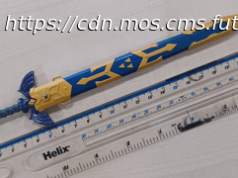We explore the history of the FIFA franchise: from its pixelated roots to the authentic soccer sim we know today.
It’s a little bizarre to imagine a gaming landscape in which FIFA didn’t exist, but the very first entry in the series didn’t arrive until 1993. Prior to this, soccer simulators weren’t really simulators at all, but more of an arcadey approximation of the beautiful game.
But by the early ’90s, there was a shift in the games development scene where studios wanted to create sports games that closely resembled their real-life counterparts as much as possible. Sensible Soccer was one of the earliest, back in 1992, with its more traditional birds eye view and after touch controls, but when FIFA emerged from the tunnel it had one thing on its mind: true authenticity.
What made FIFA International Soccer different from the rest was… well, FIFA. Publisher EA likely coughed up a lot of money to secure the official licence of the international soccer governing body, but it gave this inaugural entry an instant weight its competitors lacked outside their core brands.
By shifting the view from top-down to an isometric position, FIFA offered more of an intimate approach to player movement and opened up the passing game as a result. It sold well over 500,000 units at the time, an unheard of figure for a brand new sports IP, and secured the development of a sequel — FIFA 95.
From here, the series’ annual release schedule began with haste. The demand for a finely-tuned soccer simulator was clearly there (especially in Europe) and FIFA 95 tapped into this with the removal of one-touch passing and an enhanced take on set-pieces. By the time FIFA 96 rolled around in 1995, more changes were afoot. The advent of more powerful consoles capable of supporting 3D renders enabled original developer Extended Play Productions to create 3D models in a ‘virtual stadium’ that not only utilized real player names and likenesses (a first for the series at this point), but created a far more realistic experience.
By the time FIFA 97 laced up its boots the following year, the series had fully embraced polygonal player models, leaving the sprites utilized in many previous versions behind. The introduction of commentary voice over (another first, courtesy of the legendary John Motson), the inclusion of more official leagues (Malaysia’s M-League being one) and a brilliant six-a-side mode really showed EA was upping its game. When FIFA: World to Road Cup 98 followed it up in 1997, we were starting to see something resembling the level of quality we see today, with more official teams, additional stadia and a proper use of the off-side rule.
Домой
United States
USA — software The beautiful game: how FIFA became the champion of soccer simulators






